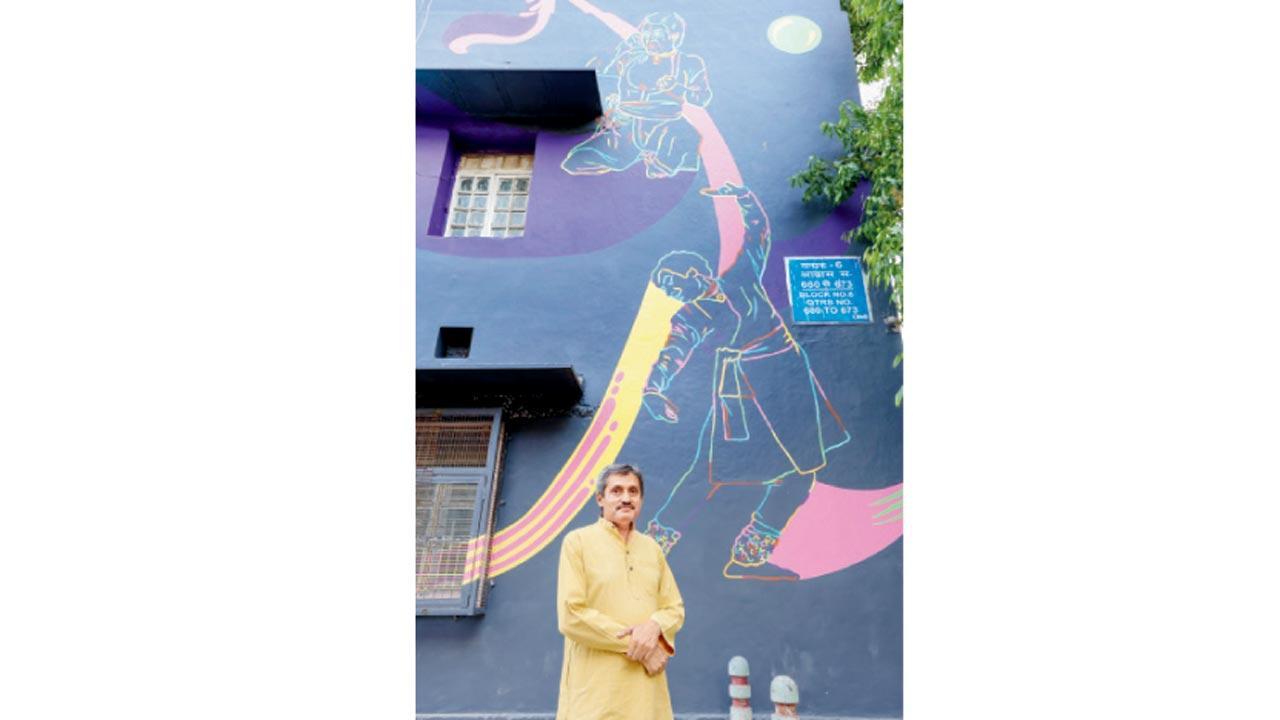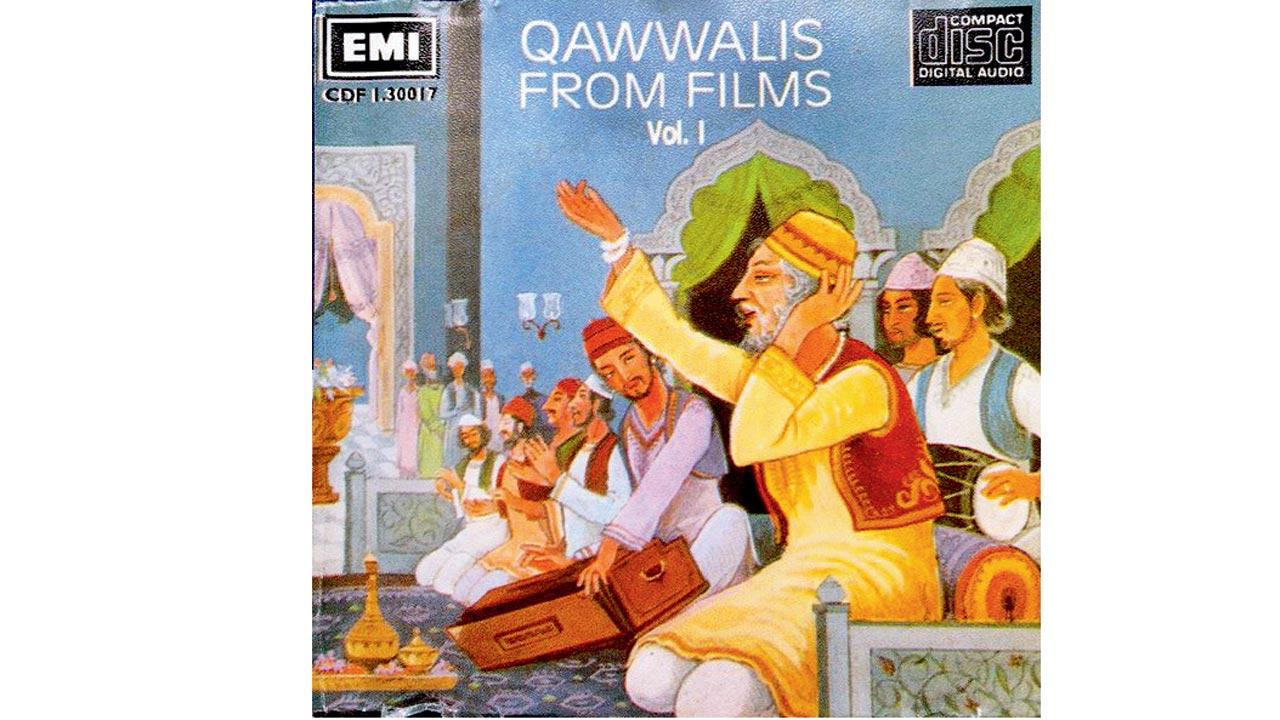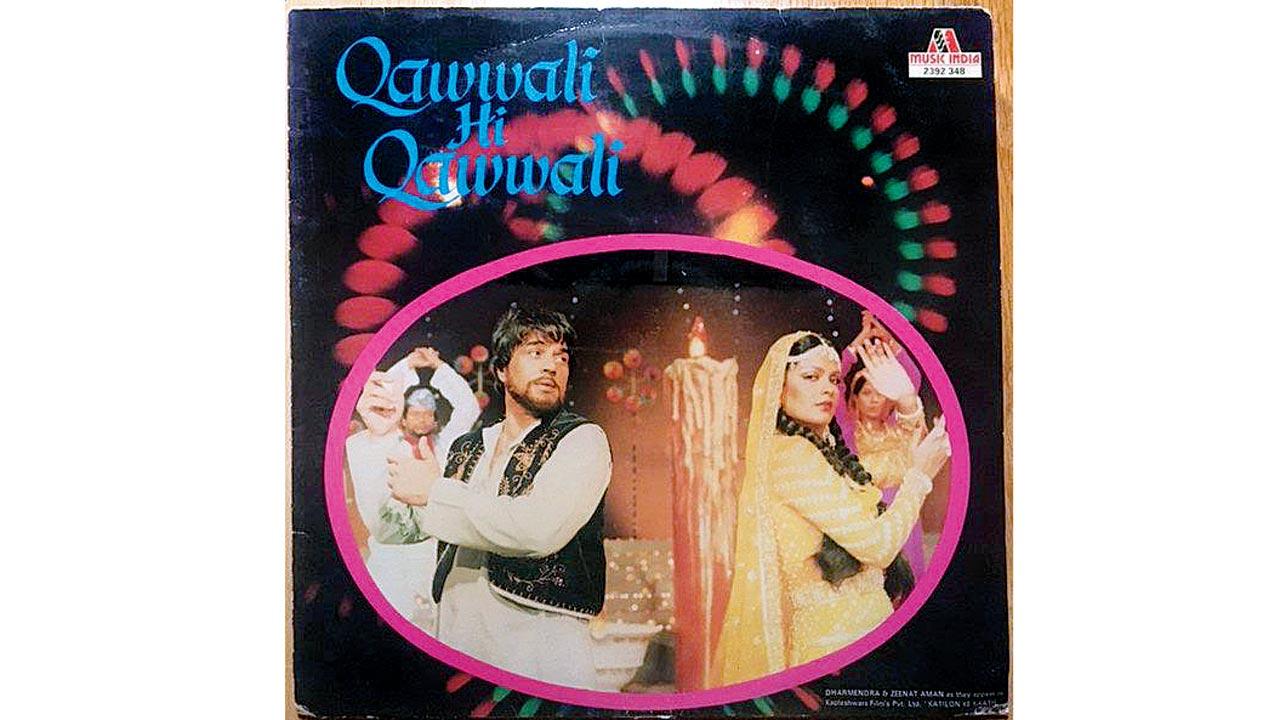A filmmaker’s decade-long research into the qawwali of Bombay cinema has resulted in rich documentation while opening up new avenues for studying India’s vast cinematic history

Yousuf Saeed’s Cinema Qawwali Archive has catalogued over 600 songs from Hindi films dating from 1939 to 2022. Pic/Nishad Alam
When people think of qawwali, they think of devotional music. But, the Mumbai film industry has given the qawwali a new identity, expanding its scope from Sufism to a song of entertainment in a secular, non-Islamic mode,” says filmmaker and researcher Yousuf Saeed over the phone from Delhi, where he is based. Saeed has made a series of films on Sufi poet and composer Amir Khusrau, who was credited with creating the qawwali in the late 13th century for Doordarshan. He has been documenting qawwali performances in various Sufi shrines for long, making him just the right man to create a database of more than 600 songs dating from 1939 to 2022. Since 2021, Bengaluru’s India Foundation for the Arts has supported this research that is now called the Cinema Qawwali Archive.
While there are no historical sources to indicate how the qawwali was performed before the recorded performances of the early 20th century, the time period of the recordings coincides with its performances in cinema. “It’s difficult to separate the histories of the cinema qawwali and the dargah qawwali because they appear alongside throughout the 20th century,” he says. “Even Khusrau was writing ghazals that were being performed in the king’s court as well as in the Sufi space of Nizamuddin Auliya.”
 (From top left) Barsaat ki Raat, which comprises the epitome of the cinema qawwali, also had competitions between men and women qawals. “This was a big change that the cinema brought in because in the traditional qawwali space before that, we usually don’t hear women singing”; The performers would usually be dressed in shiny sherwanis, decorated crooked caps, have handkerchiefs tied to their hands and be seen eating paan. “They did establish a stereotype of the Muslim community,” Saeed admits
(From top left) Barsaat ki Raat, which comprises the epitome of the cinema qawwali, also had competitions between men and women qawals. “This was a big change that the cinema brought in because in the traditional qawwali space before that, we usually don’t hear women singing”; The performers would usually be dressed in shiny sherwanis, decorated crooked caps, have handkerchiefs tied to their hands and be seen eating paan. “They did establish a stereotype of the Muslim community,” Saeed admits
Saeed has been working on the archive for close to 10 years. It has meant hours spent on poring through databases, published books, lists and YouTube to identity film songs that can qualify as qawwalis. “You can’t simply type ‘cinema qawwali’ in YouTube search and expect to find the required songs,” he shares. “It’s much more complex and had to be done via cross referencing other textual databases, books on cinema and a lot of guess work about singers, song lyrics, actors, storylines, directors and movie titles. Very often, I’ve had to watch an entire movie or all its listed songs to find just one qawwali.”

Islamicate movies—Muslim socials, historicals or Muslim devotionals—he discovered, often contained such songs. Films with exotic locations and themes and even those made in the 1960s and ’70s about criminals, outlaws and ‘outsider’ characters like Jahazi Lutera, Jungle Princess and Behram Daku, he found had qawwalis. Even Sholay’s Mehbooba Mehbooba, Saeed points out, is a qawwali-like rhythmic song as it uses central Asian instruments like duff and rubab, Arabian belly dance and Urdu lyrics.
 What makes it to an archive requires cross referencing other textual databases, watching entire films and a movie’s listed songs
What makes it to an archive requires cross referencing other textual databases, watching entire films and a movie’s listed songs
Specific playback singers were also yet another way of locating qawwalis. While Mohammad Rafi—who sang the largest number—and others like Manna Dey, Mahendar Kapoor, Asha Bhonsle and Lata Mangeshkar lent their voices to qawwalis, there were also traditional qawwals like Yusuf Azad, Ismail Azad, Jani Babu, Aziz Naza and Shakeela Bano Bhopali who sang for films. Bhopali in fact, was so popular that a flop film could allegedly be turned into a hit when re-released with a qawwali featuring her. Saeed also shares that while the male qawwal’s voice was often used in songs, Bhopali’s wasn’t because it had a certain hoarseness, more suited to the urban folk songs she usually sang. “But she had the looks and ada’en [emotional posturing] of a qawwali singer and so, was a regular presence.”
Moreover, first, Saeed had to arrive at a definition of the cinema qawwali before he could determine which songs would make their way into the archive. The qawwali in cinema, Saeed explains, has a strong visual element. “More than the aural specifications, it has to ‘look’ like a qawwali,” he insists. This would typically mean a group singing on a stage, specifically for an audience rather than just for the viewer of the film. It would be accompanied by a type of clapping with palms pressed together and rotated in opposite directions, the use of a specific qawwali theka (style), and close-up shots of harmonium keys and also dholaks and tablas. The performers would also usually be dressed in shiny sherwanis, decorated crooked caps, have handkerchiefs tied to their hands and be seen eating paan. “They did establish a stereotype of the Muslim community,” Saeed admits. The qawwali also functioned as a storytelling device, serving to break the monotony of the story while also often challenging the actions of a character in the film. They are ultimately light, funny and energetic songs. As Saeed insists, “there are no sad qawwalis”.
 Subscribe today by clicking the link and stay updated with the latest news!" Click here!
Subscribe today by clicking the link and stay updated with the latest news!" Click here!










